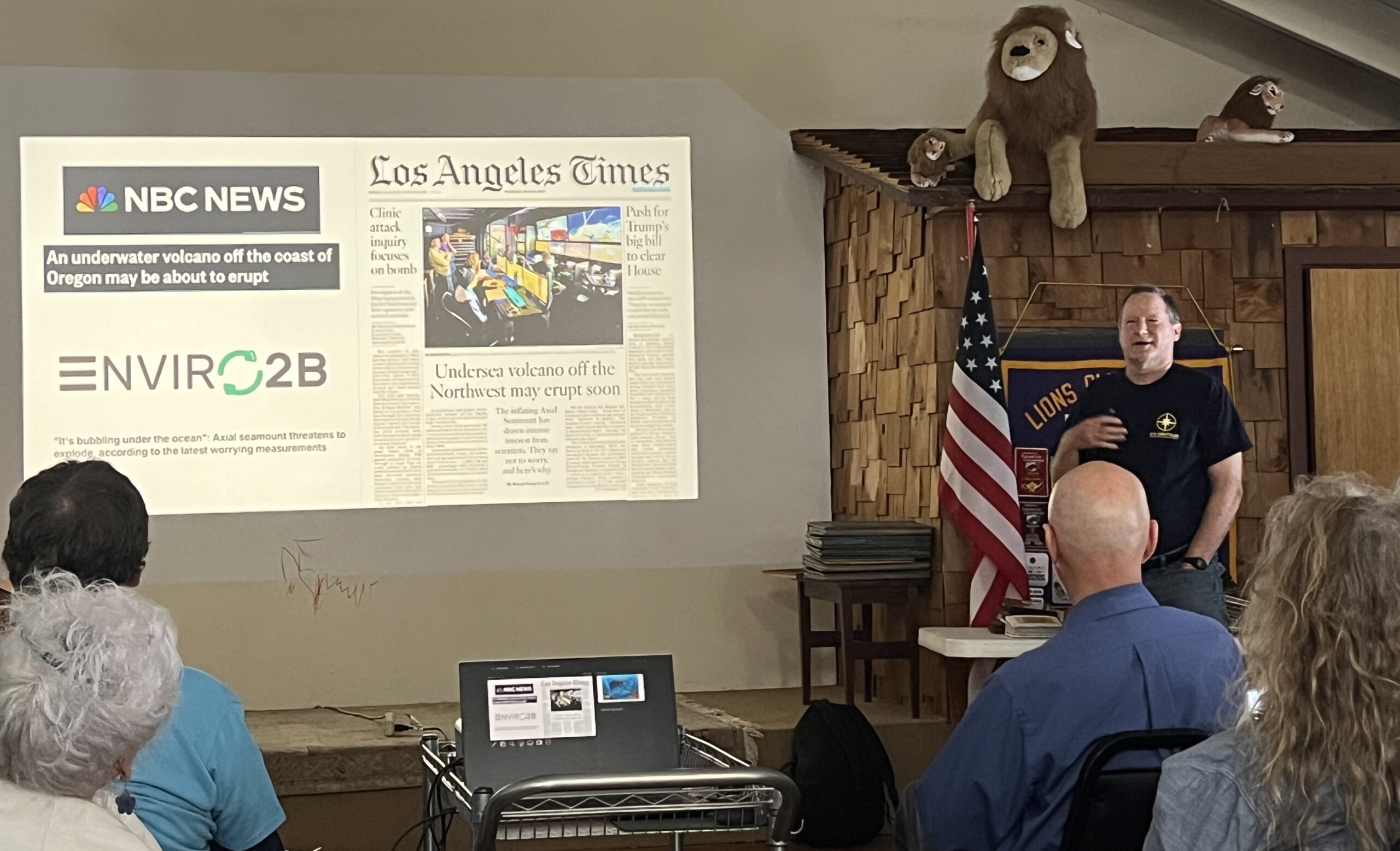
By QUINTON SMITH/LINCLN CHRONICLE
YACHATS – Bill Chadwick expects an undersea volcano 300 miles west of Newport to erupt in the next 4-6 months, but it won’t create a tsunami and send Oregon coast residents scrambling for safety.
Instead, the first eruption of the Axial Seamount volcano in 10 years should help give geologists like him more insights into predicting eruptions – be they deep under water or tall mountains in the Cascade Range, on Hawaii or in Iceland.
Chadwick is a volcanologist at Oregon State University’s Hatfield Marine Science Center who has been studying the Axial Seamount for years and using National Science Foundation grants to travel every couple of years – and hopefully again in 2026 — to collect samples from the seafloor.
He outlined his work and predictions – and humorous asides about news media coverage – to an audience of 75 Yachats-area residents Sunday during a bi-monthly speakers series sponsored by the Yachats Lions Club.
The subject of Chadwick’s interest is 300 miles off the Oregon coast and a mile below the water’s surface.
The Axial Seamount has erupted three times in the past 25 years – the first time it was noticed by scientists was 1998 — and because subsequent eruptions seem to be predictable it has drawn the interest of scientists like Chadwick, from the National Oceanic and Atmospheric Administration, the University of Washington and others.
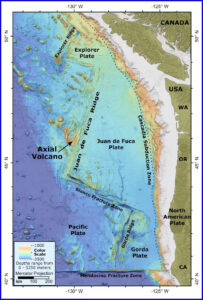
They want to determine if the Axial Seamount’s eruptions can be predicted and then translated to more active surface volcanos near where people live.
“We’re trying to learn more about how volcanos work and better predict eruptions,” Chadwick told the Yachats audience. “Where there has been success in forecasting, scientists tend to pay attention. We’re all trying to learn from each other and what lessons can be applied.”
Despite headlines on some news reports this year, Chadwick is quick to point out that an eruption of the Axial Seamount would be harmless to humans because the earthquakes associated with it are very small – a magnitude of 0 to 2 — and the lava is quickly cooled by the ocean.
“The great thing about Axial Seamount is that nobody lives there,” he said Sunday.
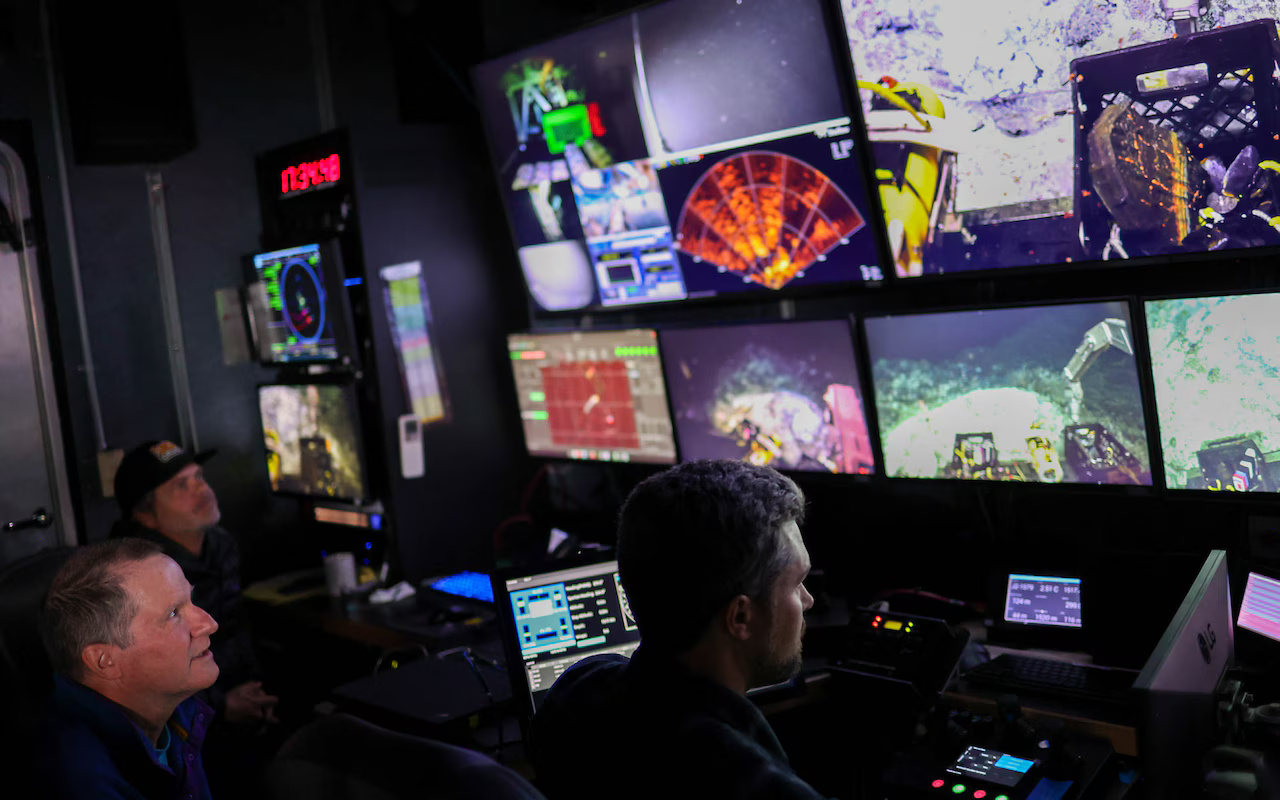
Hits and misses
The Axial Seamount sits on the Juan de Fuca Ridge, which is a boundary between two tectonic plates that are spreading apart. When spreading events occur it allows magma from a reservoir beneath the seamount to push up to the seafloor to erupt as lava flows.
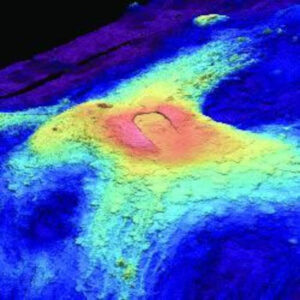
Scientists first recognized an Axial Seamount eruption in 1998 when the sea floor rose more than 10 feet, spewed lava and then collapsed. Data then showed it slowly reinflated before erupting again in 2011. Based on data from those years of seafloor expansion, Chadwick forecast an eruption in 2015 “and it happened again.”
“Wow,” he told the Yachats audience. “We know what we’re doing. Spoiler alert – we don’t.”
Based on data after 2015, Chadwick has tried to forecast the timing of the next eruption but the forecasts have had to be changed many times because the data has been much more variable than previously. Then between late 2023 and July 2024 the expansion of the sea floor “made this remarkable turnaround” and is currently near the threshold of the 2015 eruption, he said.
Now, Chadwick is forecasting an eruption by the end of this year or in early 2026 based on the rise of the sea floor and the increased number of tiny earthquakes “that tell us about the overall supply of magma.”
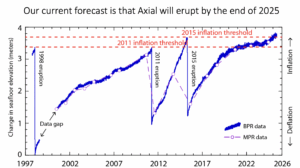
“We’re getting very, very close to another eruption,” he said. “But still, I wouldn’t put any money on that.”
Whenever it does erupt, Chadwick wants to make clear — despite some sensationalized news reports on his previous predictions – it will have no effect on the more dangerous Cascade Subduction Zone off the West Coast or even ships at sea.
“We would not know it erupted until I looked at data on my laptop,” he said. “You would not know it even if you were right over it in a boat. It’s very benign to us humans.”
But it is not to scientists.
“Volcanologists would like to forecast activity,” he said. “This is a place where we can try this.”
- Quinton Smith is the editor of Lincoln Chronicle and can be reached at YachatsNews@gmail.com




















